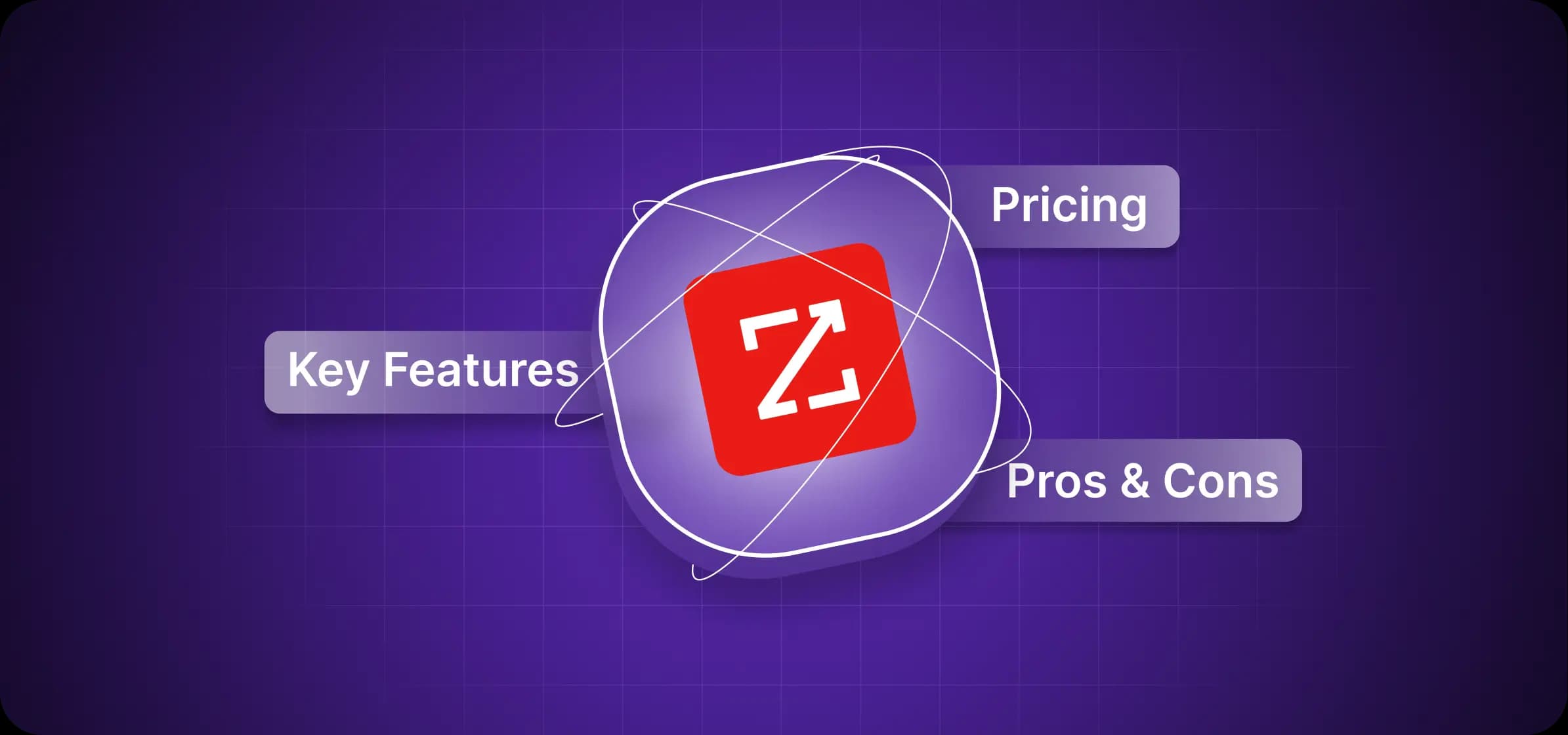Wondering if ZoomInfo is right for your outbound sales team?
You’ve come to the right place.
In this article, we break down ZoomInfo’s core features, pricing structure, and pros and cons. By the end, you’ll know whether to take out a demo or cross it off your shortlist.
Is There a Better Option Than ZoomInfo?
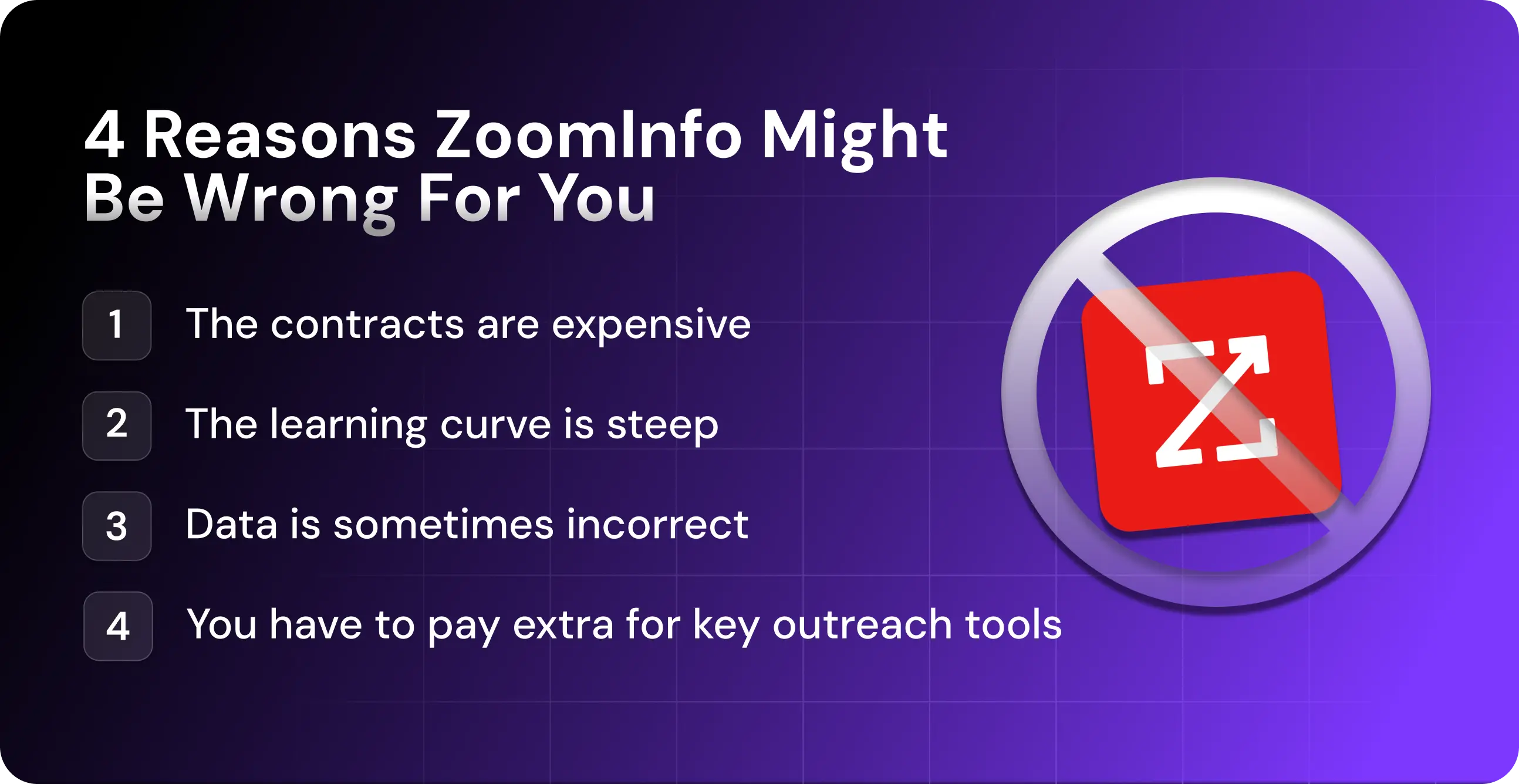
ZoomInfo is a powerful B2B go-to-market (GTM) intelligence platform with a large contact database that contains emails, phone numbers, firmographics, and technographic data. But it’s not just a sales intelligence platform. ZoomInfo also offers multichannel outreach automation tools.
For years, ZoomInfo has been a popular option for B2B sales teams trying to improve their prospecting and lead generation efforts with quality data. However, ZoomInfo is not for everyone—especially not small businesses and startups, who may be overwhelmed by the pricing, learning curve, and breadth of features.
Here are the main reasons you may want to pick a different app:
Expense: Its comparatively high cost puts it out of reach of many startups and small businesses.
Learning curve: It can be hard to learn how to use the platform, which hurts adoption rates and speed to ROI.
Old data: Data can be outdated, resulting in cold calls to dead phone numbers.
Additional costs: Some key tools are add-ons—you have to pay extra for intent data, for example.
Not too long ago, ZoomInfo also received some heat in the media for going too broad and paying too little attention to innovating its core function—B2B sales intelligence. In that same report, ZoomInfo scored lowest on CSAT (customer satisfaction), based on interviews with software buyers.
So are there better options? Yes, there are.
However, it depends on your goals. An enterprise brand may find ZoomInfo’s data and features to be ideal. Meanwhile, smaller brands focused on flexibility, affordability, and ease of use will likely benefit more from an outbound sales app like Artisan, which provides not only a B2B database but also AI SDRs who can conduct personalized outreach on their sales team’s behalf.
Read on for a breakdown of ZoomInfo’s features, pricing, and more.
ZoomInfo Review: What You Get (and What You Don’t)
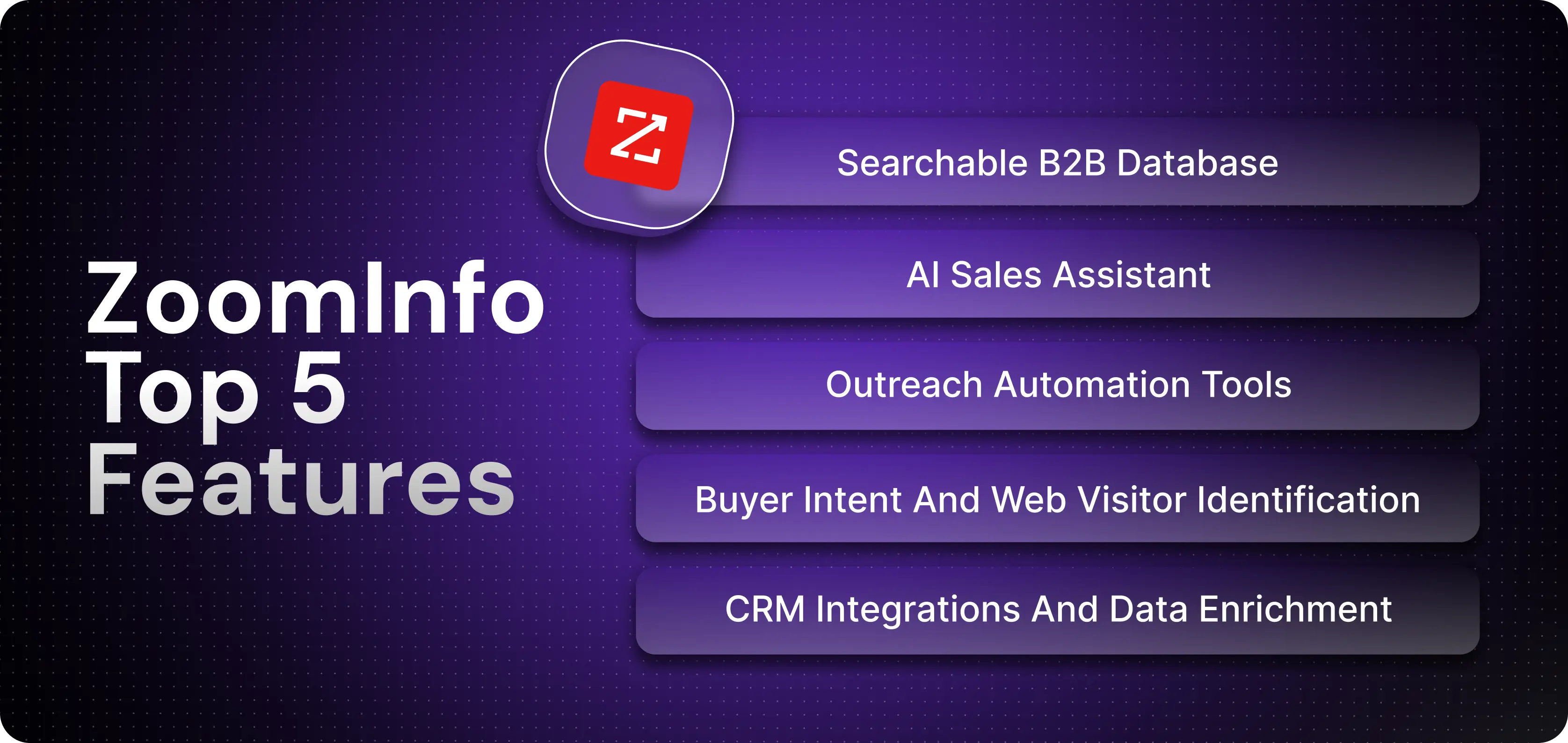
ZoomInfo’s most well-known feature is its searchable B2B contact database.
But it offers far more than sales intelligence. Let’s go over its key features, what we like about them, and what we find lacking.
Massive B2B Contact Database
ZoomInfo boasts one of the largest B2B contact databases, with (approximately) 260 million contacts and 100 million company profiles, mostly focused on the US.
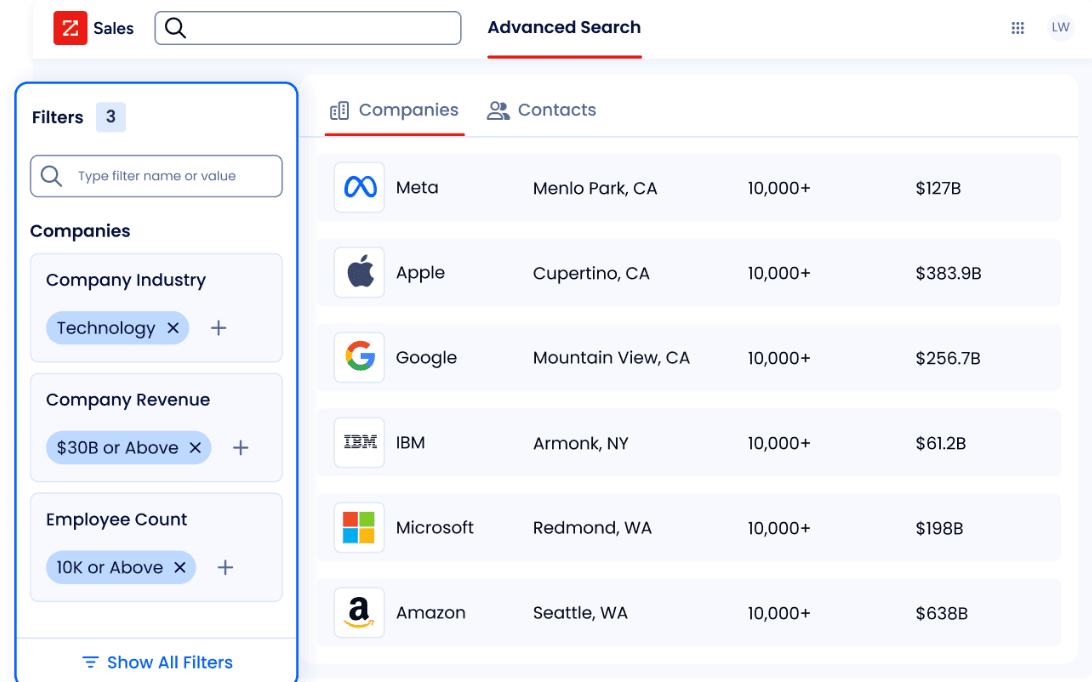
The extensive database has advanced filtering capabilities. Users can build highly targeted lead lists segmented by job title, industry, company size, and tech stack. They can also find contact information like direct dials and email addresses, making it a valuable prospecting tool.
However, many users have complained about data inaccuracies. This is an especially common issue among international clients, making ZoomInfo a less popular choice for brands selling outside of the United States.
AI Assistant (Copilot) and Workflow Suggestions
ZoomInfo’s Copilot is an AI sales assistant built on top of its B2B database. It can also work with and incorporate your first-party lead data.
Designed to speed up the outreach process, Copilot provides AI-guided sales recommendations about who to contact, how to reach out, and when to do it.
Users can also use Copilot to summarize deal histories, research accounts, and craft personalized outreach emails. In essence, it helps sales reps quickly find and use intel on their target accounts.
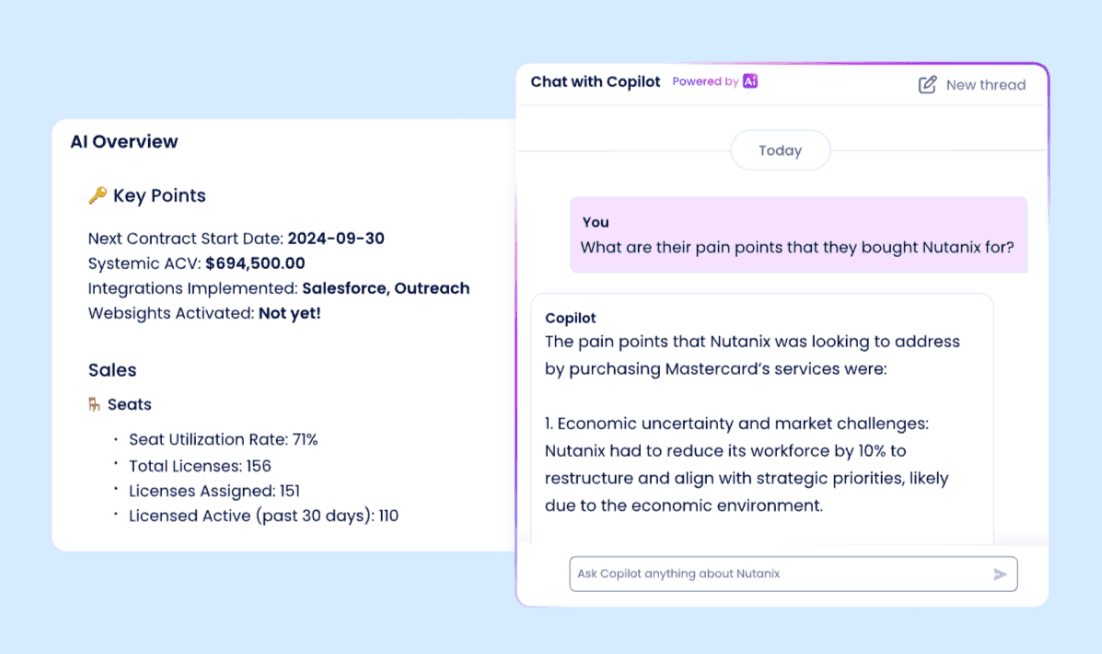
While helpful, CoPilot still requires manual execution. Reps have to learn how to interact with the AI agent, just like an executive needs to learn how to cooperate with their human assistant.
Some companies instead opt for an AI assistant that is more autonomous and doesn’t just suggest tasks but also initiates and completes them. Artisan’s AI BDR Ava, for example, finds leads, enriches profiles, sends emails, and manages follow-ups—all on autopilot.
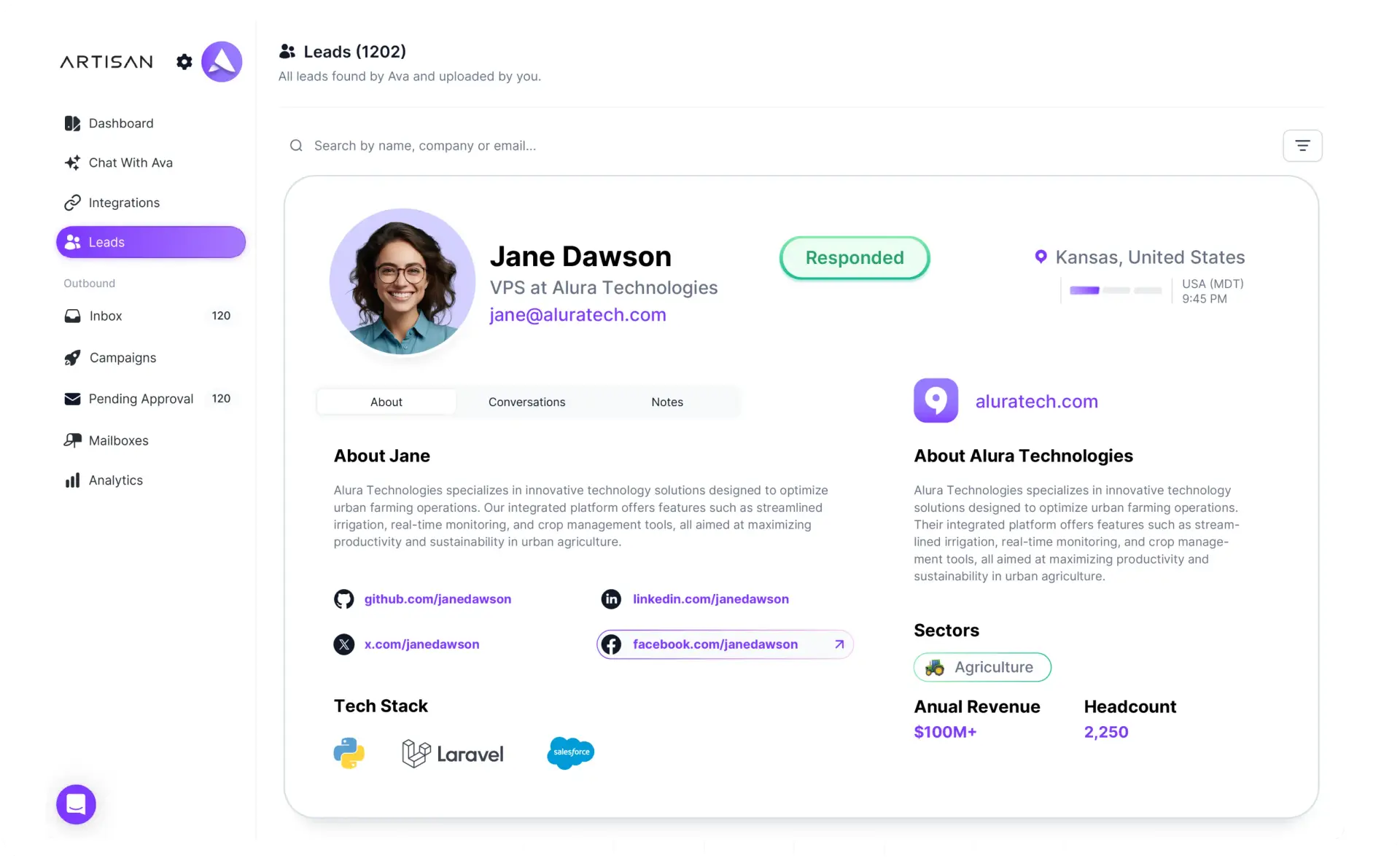
Outreach Automation
ZoomInfo Engage is ZoomInfo’s sales engagement suite.
It is a set of workflow automation tools for email and phone—like email templates and call logging—that help sales teams automate sales outreach.
Reps also use Engage to create and automate custom multi-channel outreach sequences with call tasks, emails, and LinkedIn actions, all of which can be triggered by real-time lead activity.
While useful, ZoomInfo’s sales cadencing solution is typically an add-on, meaning you’ll have to pay extra for it. It also requires a good amount of setup. This can make it feel a little outdated when put next to other AI-first sales engagement and email outreach and follow-up solutions.
For example, Artisan has a suite of features for automating multi-channel outreach with AI-generated messages. AI BDR Ava doesn’t just compose messages; she sends them. Better yet, she can build, run, and test entire personalized outreach campaigns on her own.
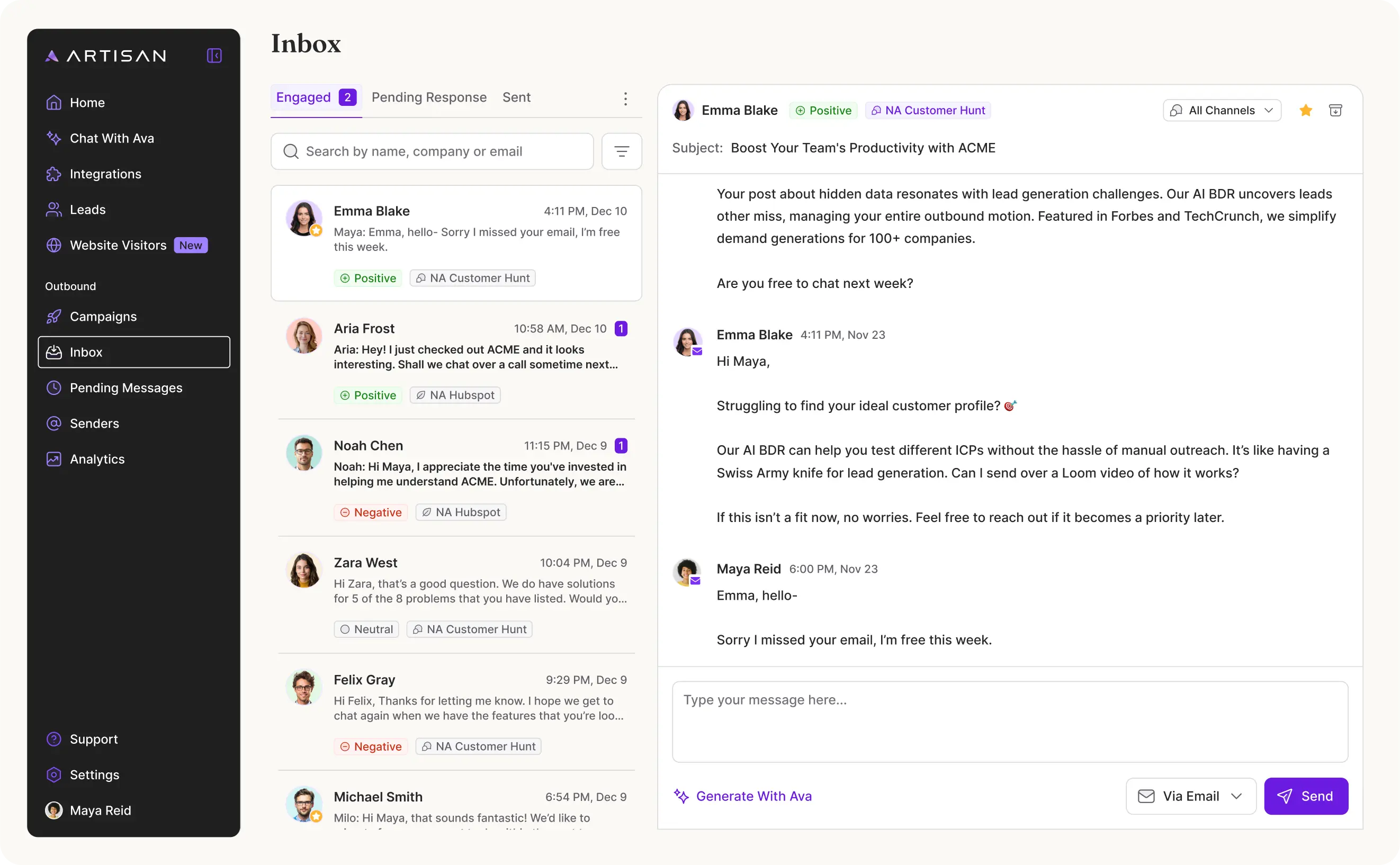
Buyer Intent and Website Visitor ID
ZoomInfo comes with several features that help you identify hot leads and that facilitate intent-based targeting.
ZoomInfo Buyer Intent surfaces companies researching topics and keywords related to your business. It also scores leads based on their real-time intent signals.
Notably, by integrating their sales and marketing platforms, users can also create workflow automations that are triggered based on intent.
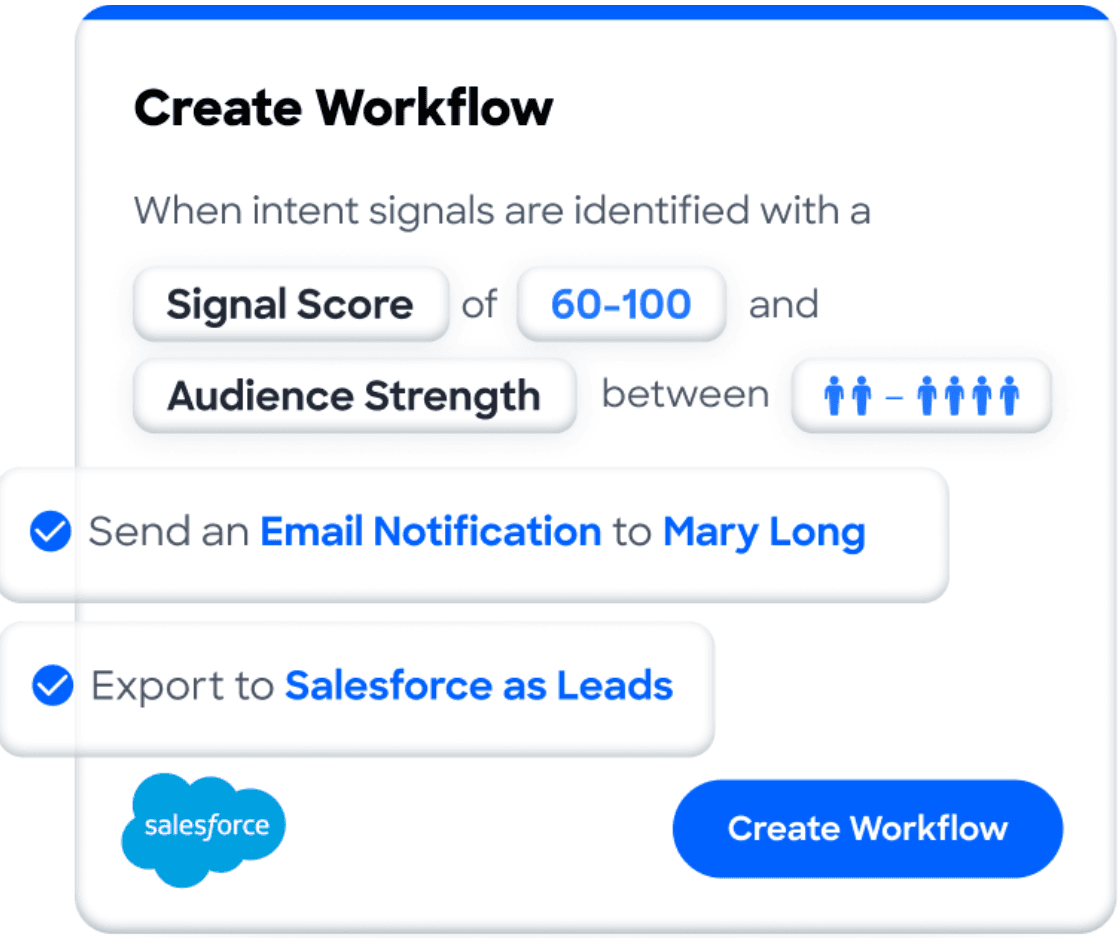
ZoomInfo also has a web visitor tracking tool called WebSights that identifies anonymous companies visiting your website and provides you with the contact info of the company’s decision-makers.
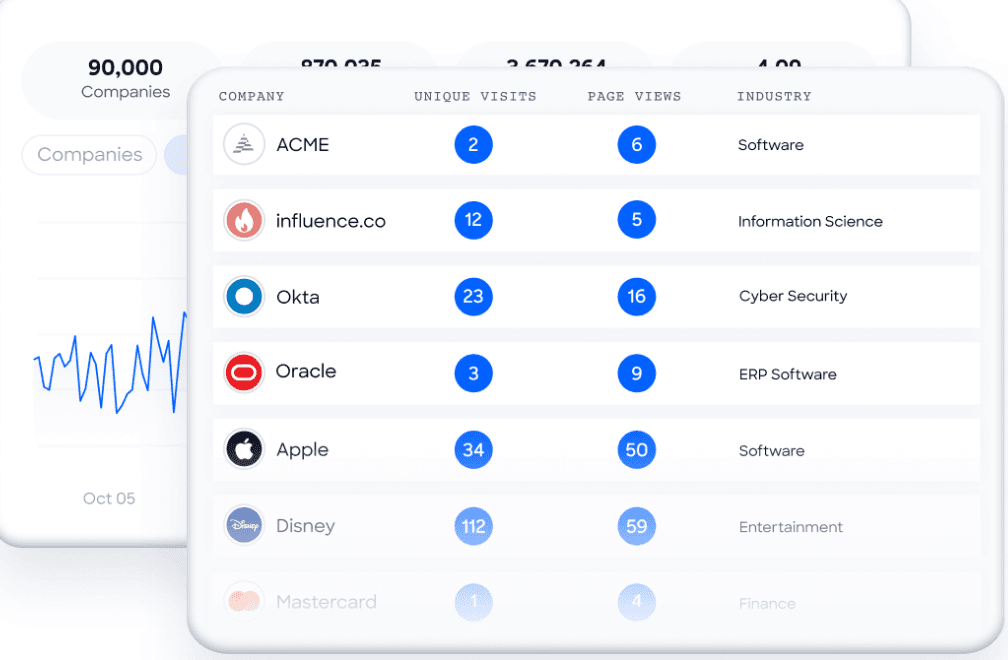
While these two prospecting tools are powerful, they’re unfortunately locked away as add-ons or inside ZoomInfo’s more advanced and (according to third-party sources) more expensive plans.
For that reason, many users prefer a more all-in-one tool like Artisan, which includes real-time intent signal scraping and web visitor identification in all its plans.
CRM Integrations and Enrichment
ZoomInfo syncs with major CRMs and enriches records in real time.
This is a core strength of the platform. Users rely on it to keep their contact and company data clean, up to date, and accurate. It fills empty fields and updates inaccurate ones, enriching your CRM with demographic, firmographic, technographic, and intent data.
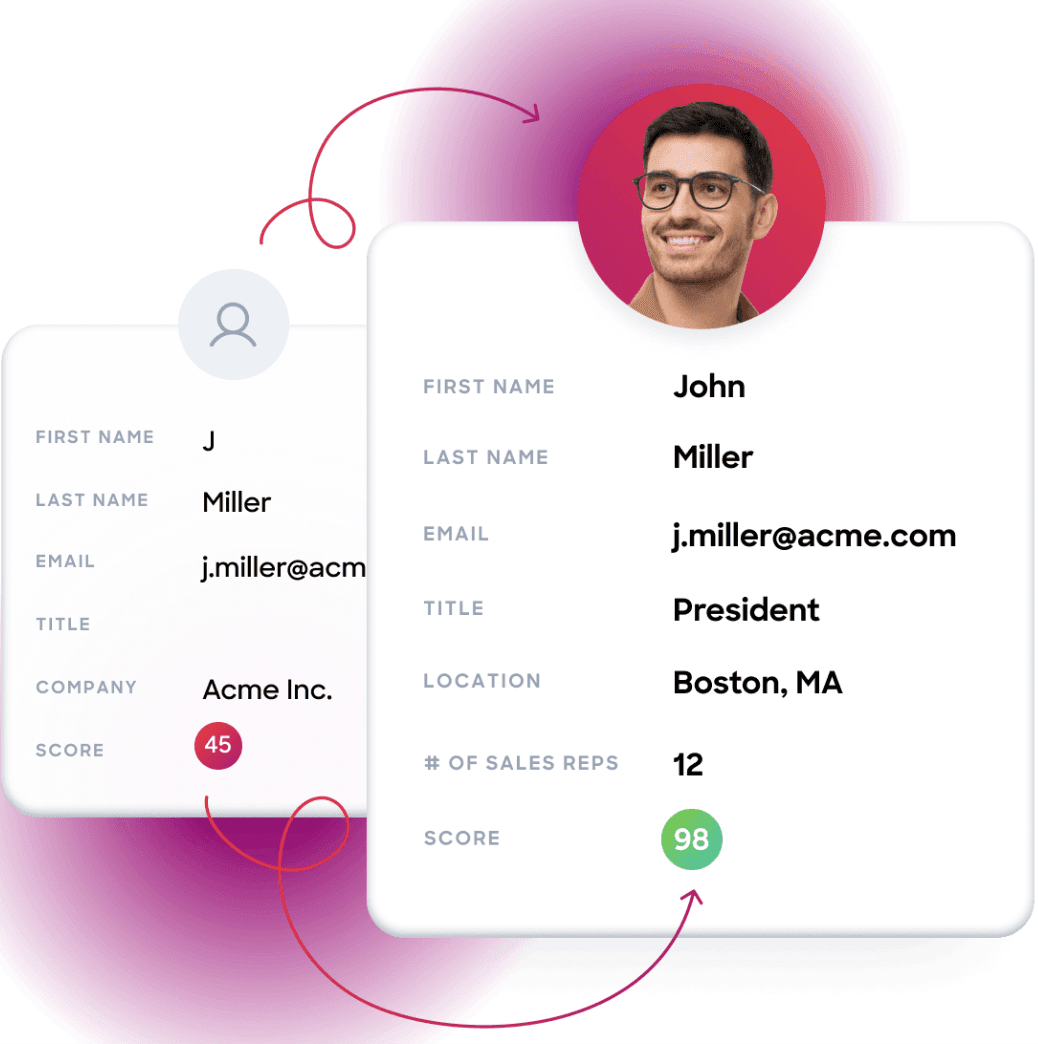
While the enrichment functionality is a genuine strength, some smaller businesses without technical data expertise might struggle to set up integrated, automated workflows.
In addition, it’s more suited to businesses with a large number of contacts in their CRMs. If you only need to enrich a small set of profiles, there are good options at lower price points.

ZoomInfo Pricing Breakdown
ZoomInfo is a little opaque about their pricing. They don’t publicly share info on their website. That said, we do have some information about what and how they charge—at least enough to help you decide whether it’s within your budget.
Plans & Structure
ZoomInfo’s pricing is quote-based. Our research found that plans start at around $15,000 per year and can exceed $40,000 per year (although you should get in touch with ZoomInfo directly for a definite quote).
Various factors influence pricing, including:
Choice of platform: ZoomInfo offers platforms for sales, marketing, operations, and recruitment. And each of these platforms is typically broken into different pricing tiers based on how many features and credits are included.
Number of users: Like most SaaS tools, ZoomInfo charges per license—the more people that use the platform, the more you’ll pay.
Credit usage for data access: Your ZoomInfo plan gives you a set amount of monthly credits you can use to access and export contact data. You can buy more for an additional cost.
Advanced features: ZoomInfo uses a modular add-on pricing structure, so you’ll likely have to pay extra for advanced features like Engage, Intent Data, and advanced analytics.
While ZoomInfo does offer a free trial, it only lets you test ZoomInfo Lite, a searchable B2B database. And you only get 10 credits for accessing email addresses and corporate phone numbers.

Pain Points Around Pricing
With so many factors influencing ZoomInfo’s custom pricing—not to mention the confusing credit usage costs—the final pricing can be a bit bewildering, causing some users to realize the true cost only at renewal.
The high costs often have buyers looking elsewhere for more affordable B2B sales intelligence. For example, Ryan M., who heads sales development at a mid-market company, wrote in a G2 review that ZoomInfo is “Way too expensive, especially compared to others in the space.”
What Are the Downsides of Using ZoomInfo?
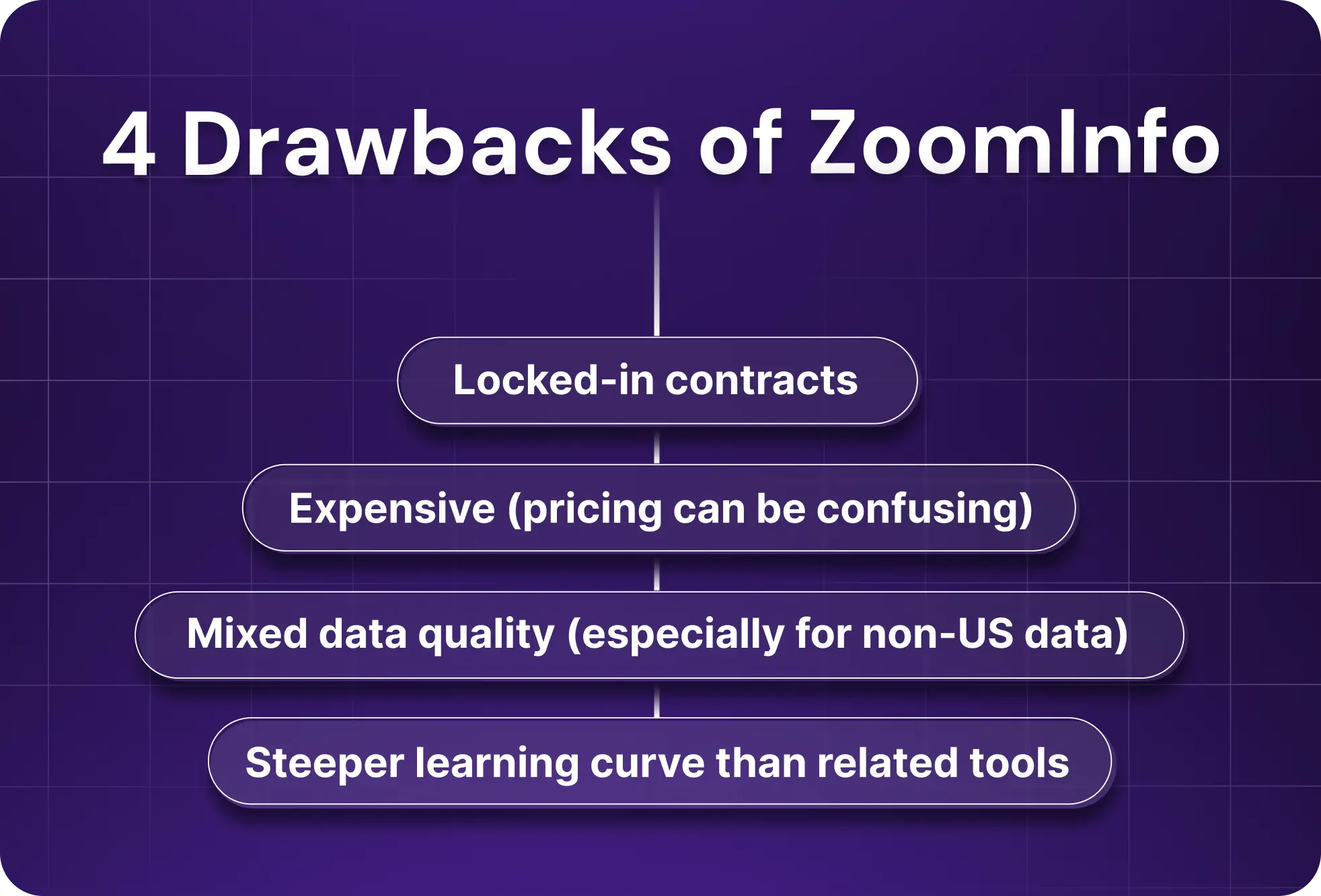
Remember your first crush? In your eyes, they were perfect…until they weren’t.
The same goes for SaaS tools. They can seem ideal. But eventually the downsides make themselves known.
While ZoomInfo is a great sales prospecting and GTM app, it does have some major flaws.
Expensive, With Confusing Pricing
ZoomInfo doesn’t publish pricing. Most users report starting plans at $15K–$30K/year, making it one of the most expensive GTM platforms on the market.
You pay per contract, and your custom pricing depends on various factors, including users, credit usage, and add-ons like real-time buyer intent, which come with their own price tags.
Harder to Use Than It Looks
ZoomInfo is powerful but complex. Many users need support and time to onboard. If you don’t have internal IT and sales ops expertise on hand, a head-splitting migraine might be around the corner.
One aspect that makes ZoomInfo’s platform so overwhelming to some users is its breadth of functionality. There are so many bells and whistles, many of which you might not need for your specific use cases.
On the other hand, an AI sales tool like Artisan is more user-friendly. You can set it up in hours, not weeks. And once you’ve set it up, Artisan’s AI SDR works on her own, without human intervention. Sure, you need to monitor her performance and optimize the AI every once in a while, but for the most part it’s a set-it-and-forget-it tool, something ZoomInfo is definitely not.
Mixed Data Quality
ZoomInfo has a huge database. But its data accuracy depends a lot on your target market. While highly accurate in the US, it’s less reliable in non-US markets.
Also, if you’re targeting small companies, you might struggle to find accurate information on. them. This makes it a less effective tool for startups working with small brands and building their way up to the whales.
The alternative is a tool with comprehensive, global scraping functionality. Artisan, for example, refreshes data with online activity signals (such as job changes and funding rounds). This means that all information—even that of small local companies—is kept fresh and accurate in its database of over 300 million leads.
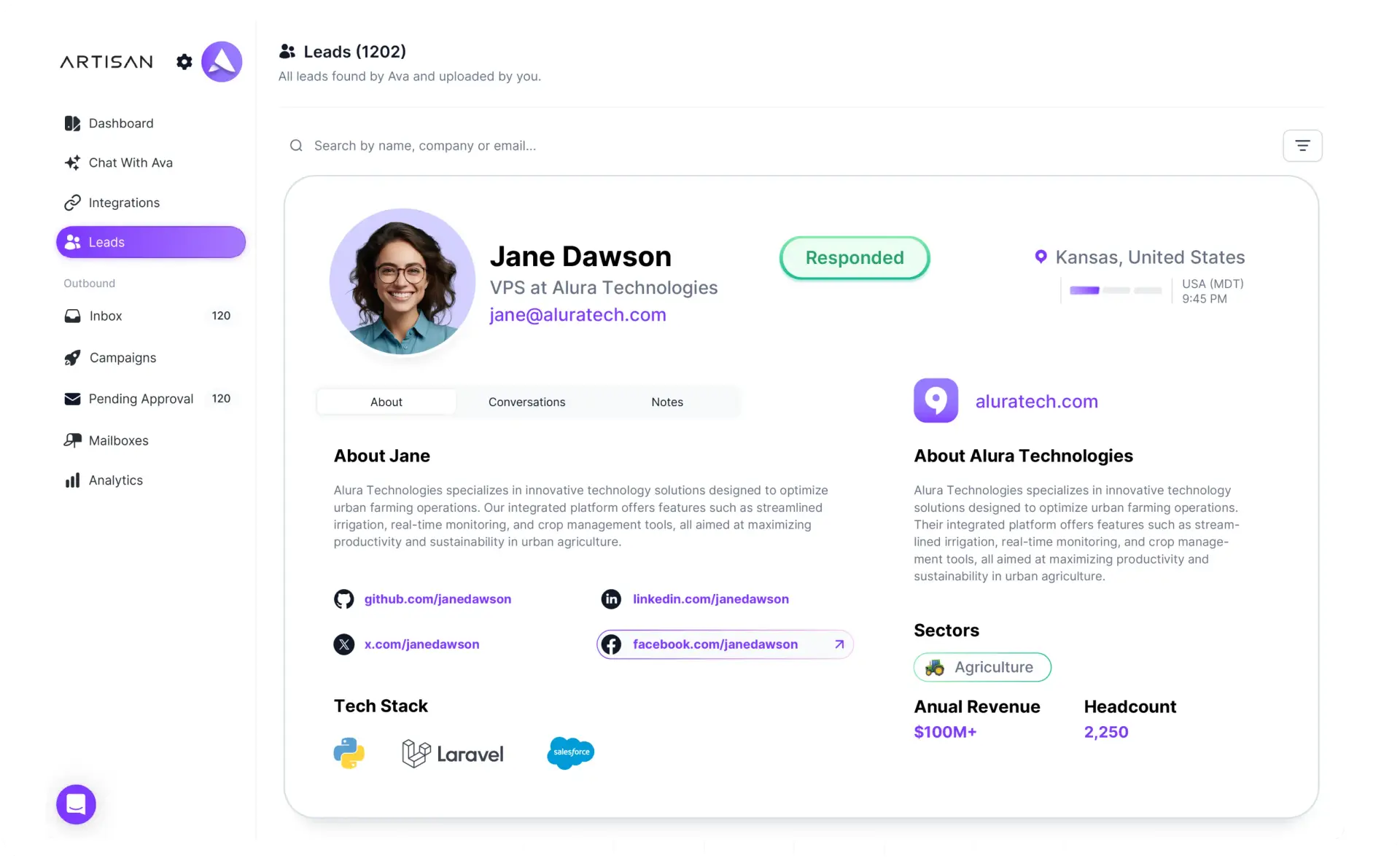
Locked-In Contracts and Renewal Traps
ZoomInfo’s contracts are often multi-year and auto-renewed. While this is great for them, it might be annoying for you, especially if you are a startup growing rapidly and unsure of where you’ll be in a few years.
There have also been complaints about long contracts and auto-renew traps, like the CEO of Tribe, Inc., who said ZoomInfo snuck an auto-renew clause into the contract:
“Apparently ZoomInfo includes a sneaky auto renewal clause in their contract that was never mentioned in sales conversations and they seem to be railroading us into renewing another year against our will.”
ZoomInfo vs. Artisan: Side-by-Side Breakdown
Due to ZoomInfo’s enterprise-only pricing model and steep learning curve, it’s worth considering a more AI-first, easy-to-use sales automation tool like Artisan.
Artisan comes with an AI BDR named Ava who automates the entire outbound sales process, from finding decision-makers to sending them personalized outreach across email and social media.
Feature | ZoomInfo | Artisan |
Contacts & Data | 260M+ (US-heavy) | 300M+ (globally enriched, AI-refreshed) |
Outreach Automation | Manual sequences and dialer | Ava handles email and social media outreach fully |
Intent Tracking | Paid add-on | Included with real-time triggers |
CRM Enrichment | Yes | Yes (cleaner + simpler setup) |
Pricing | Opaque, quote-based | Transparent, flexible |
Setup & UX | Complex, time-intensive | Intuitive, quick setup |
Is ZoomInfo Worth It?
So, is ZoomInfo worth it?
ZoomInfo’s platform may be a good choice for enterprise companies with sales ops teams and money to spend. There are, in our opinion, better options for small and medium-sized businesses that want a more affordable, out-of-the-box solution.
If you’re looking for an automated solution that handles all of the early and middle stages of your outbound sales process, consider trialing Artisan.
AI BDR Ava, who runs all automated campaigns on the platform, finds high-quality leads for you and reaches out to them on social media and email. A new era of AI salestech has arrived, and Artisan is leading the charge.

